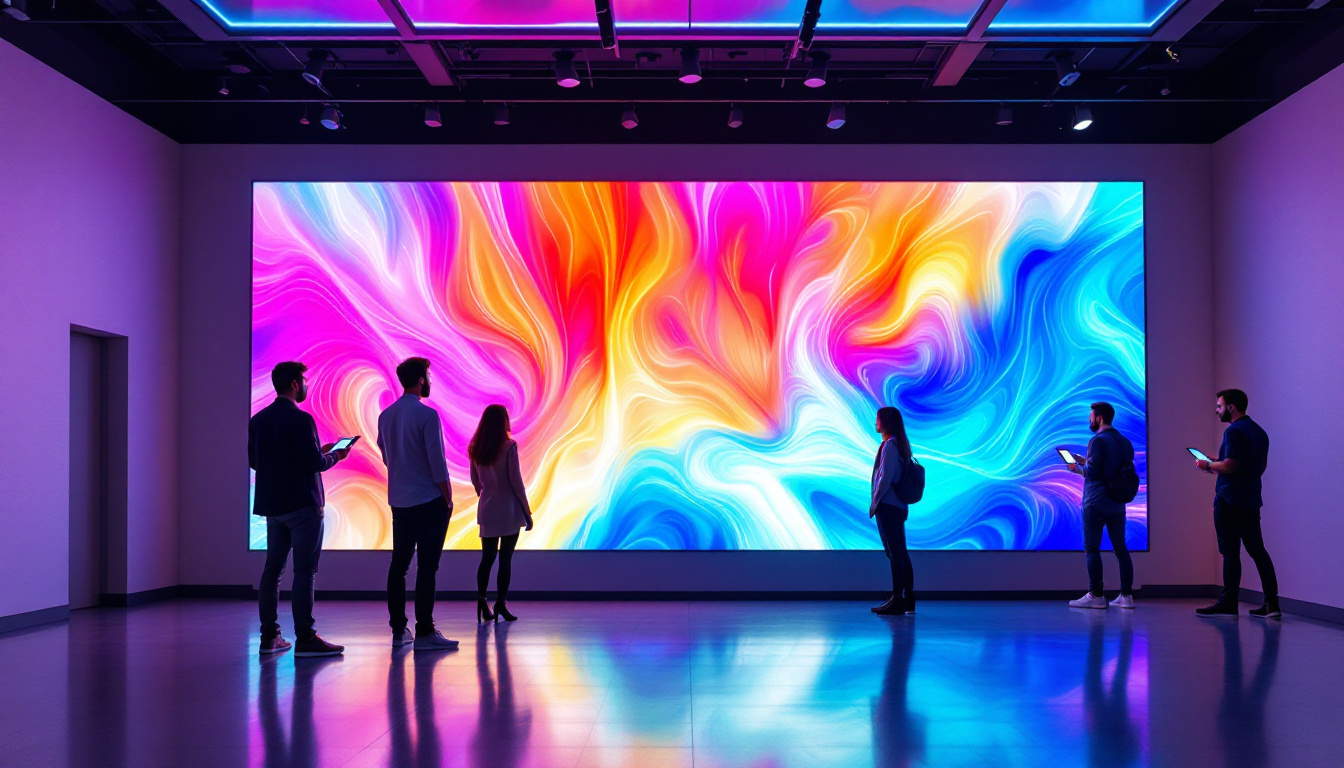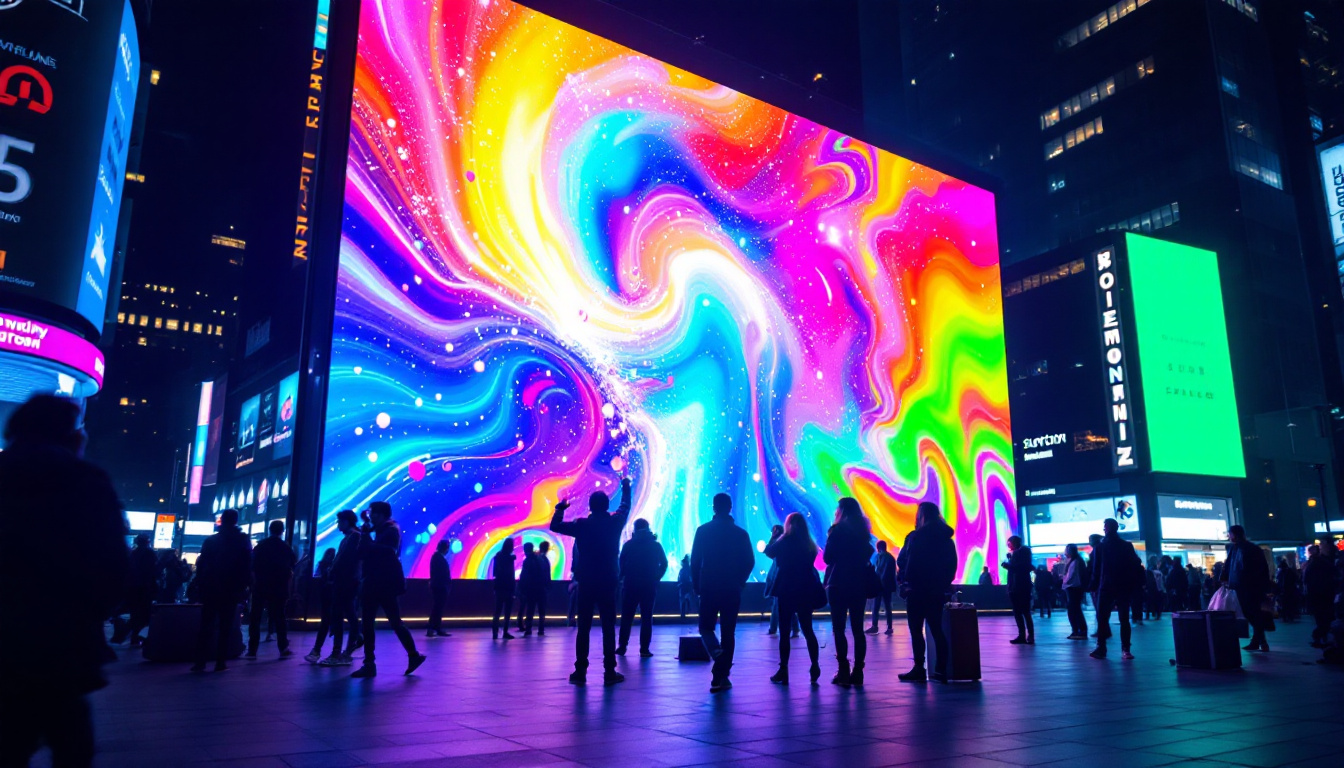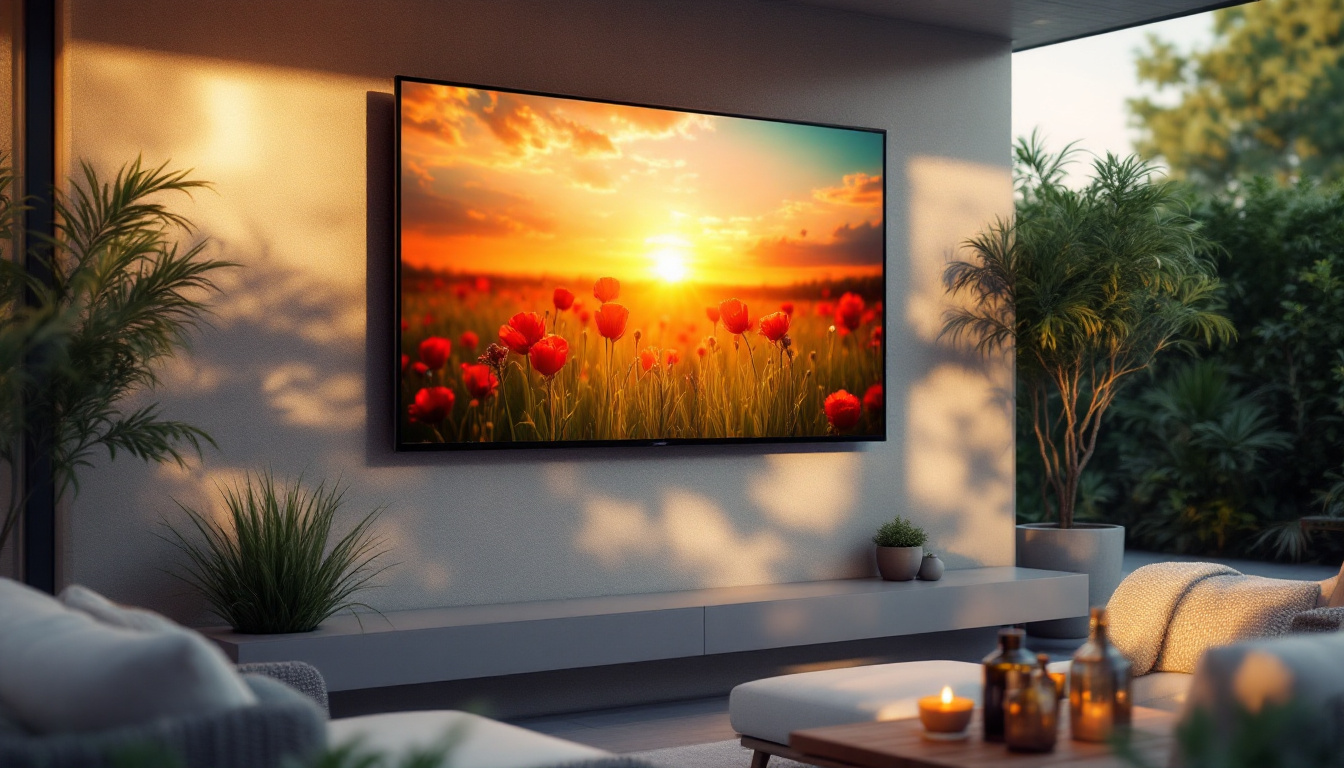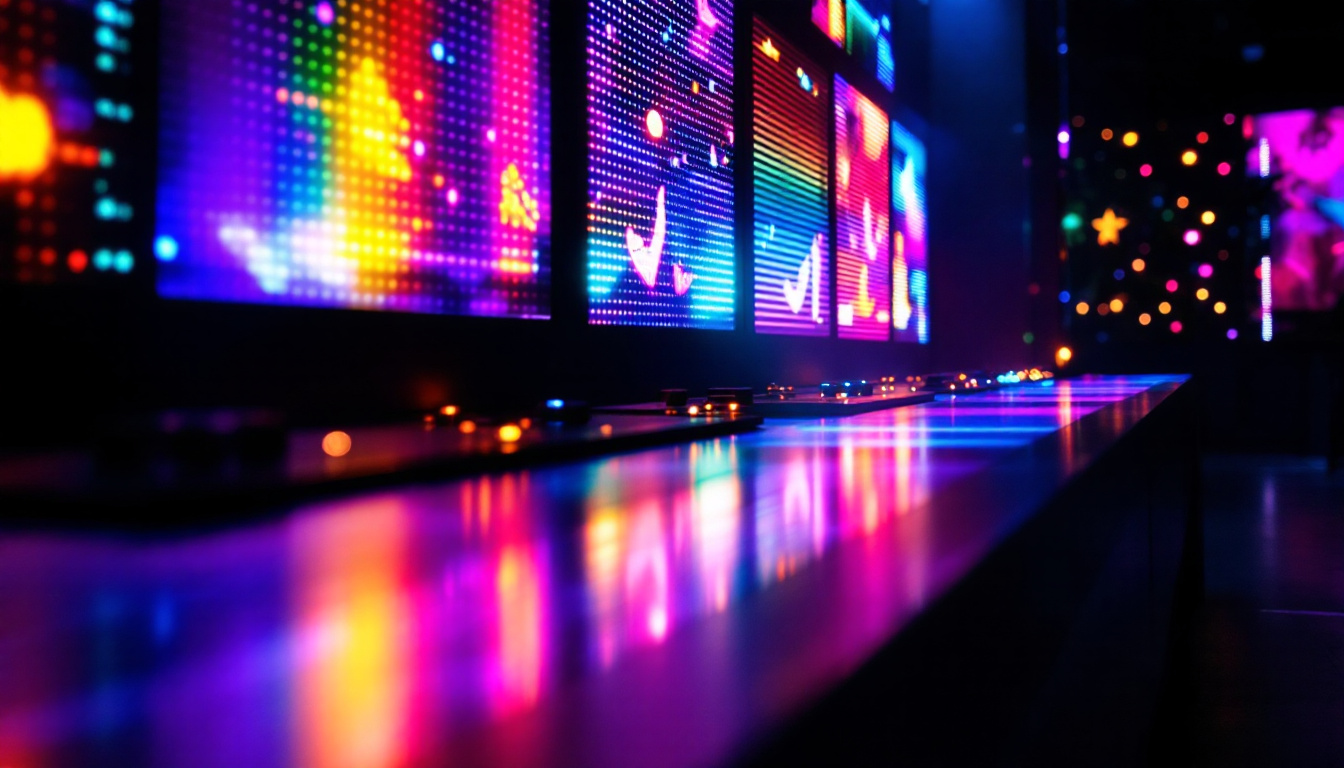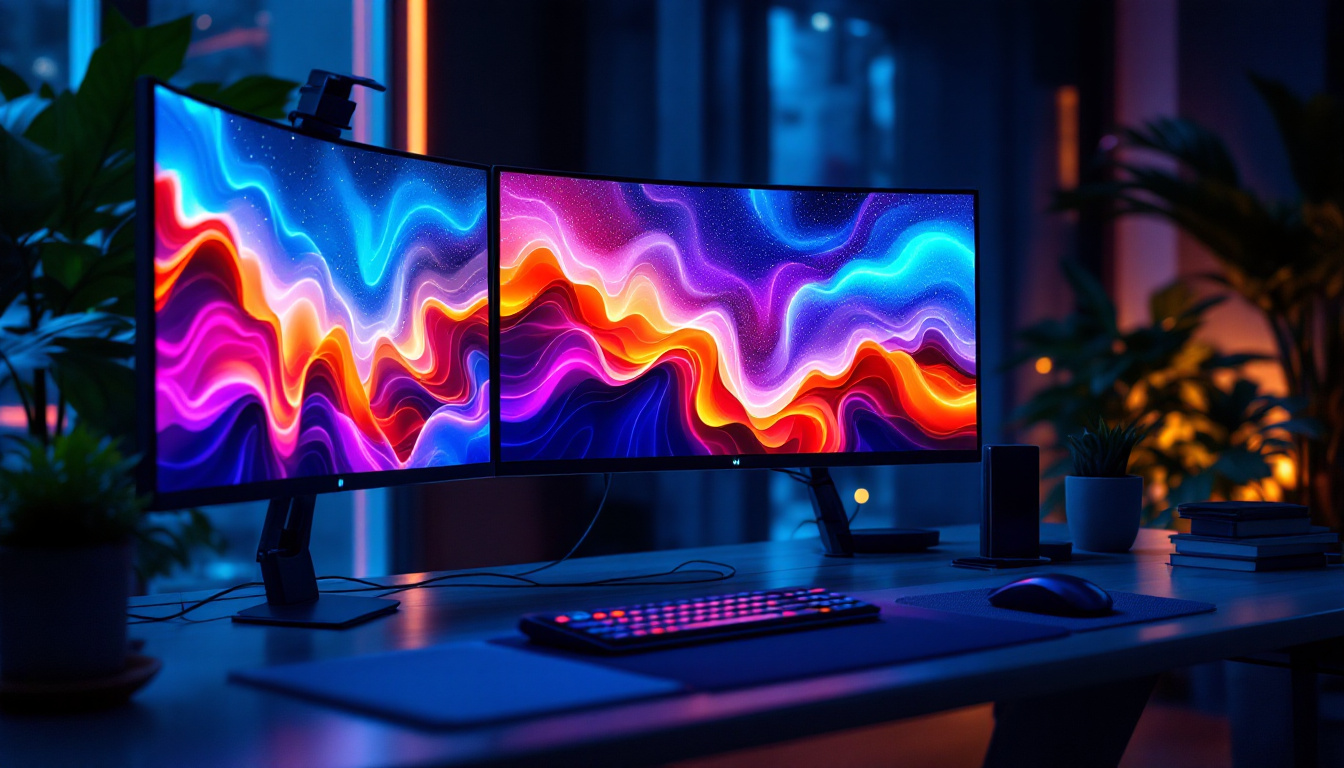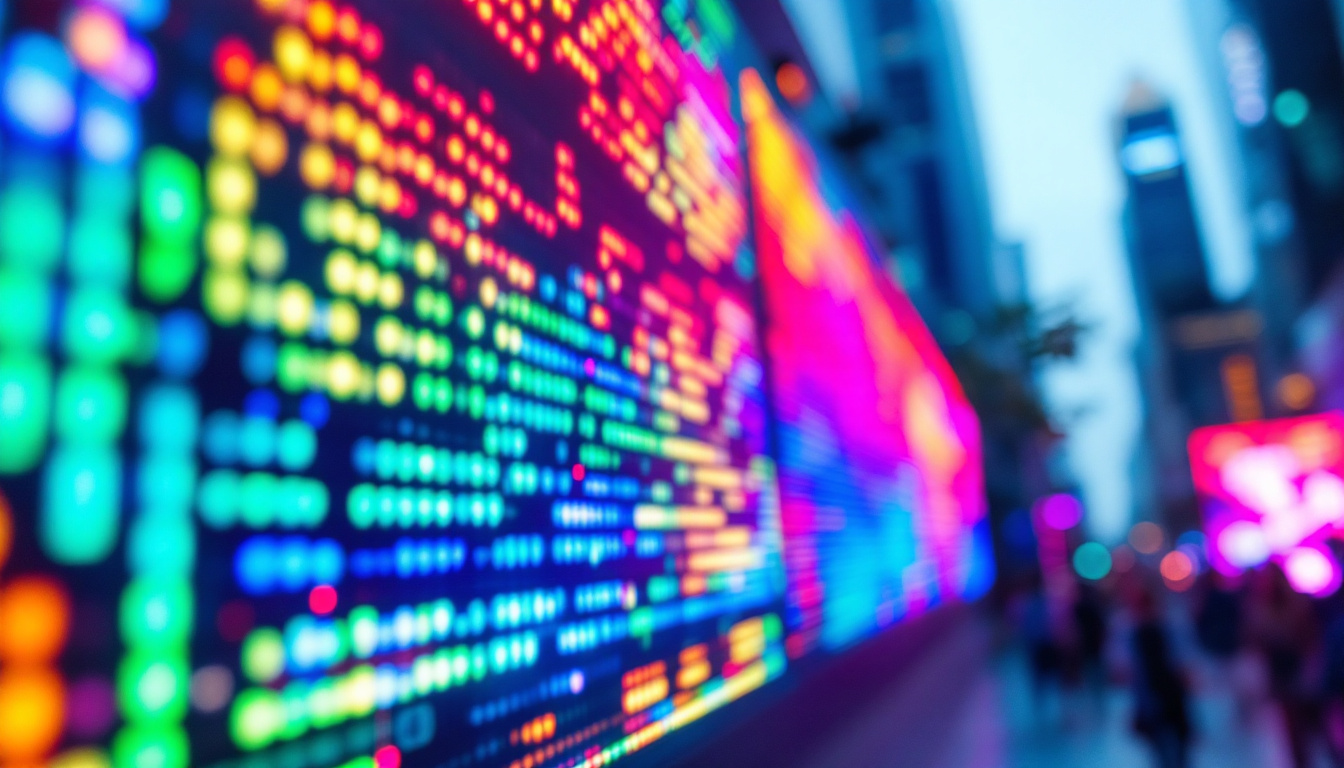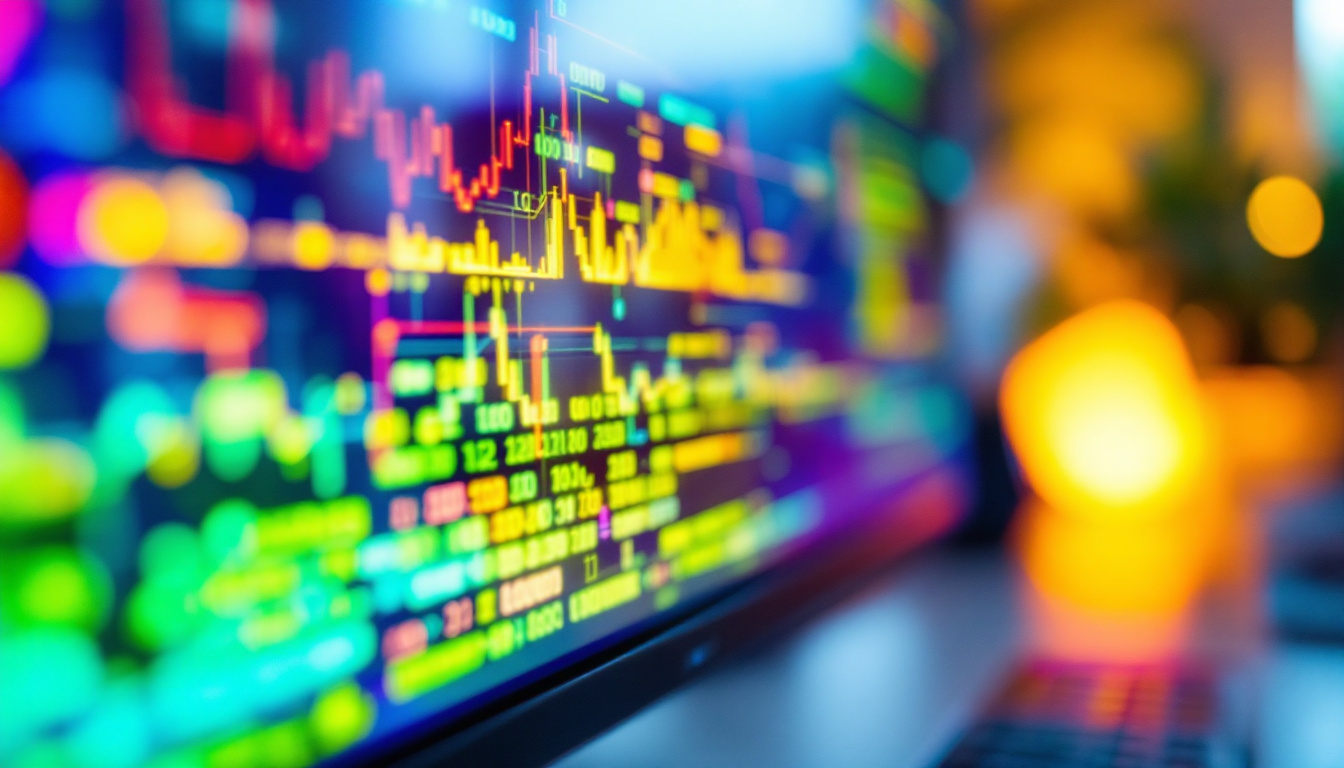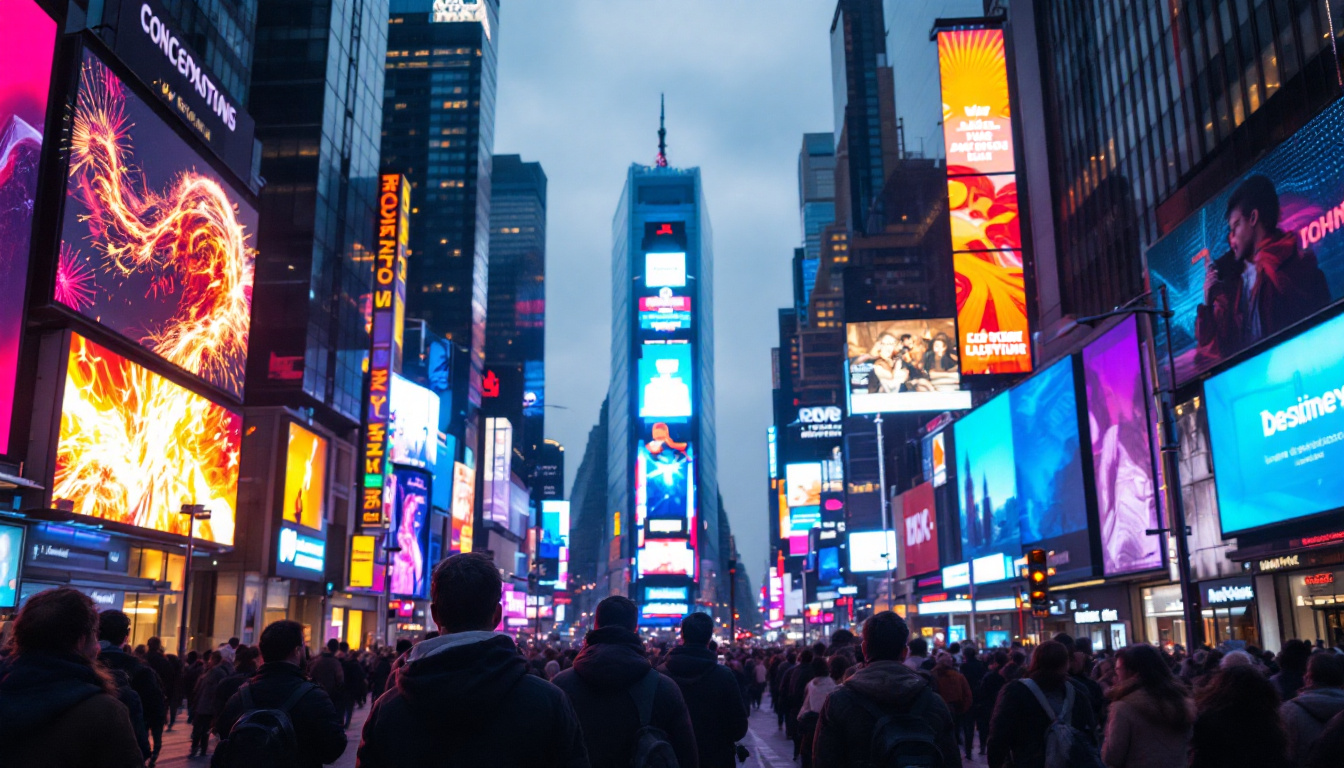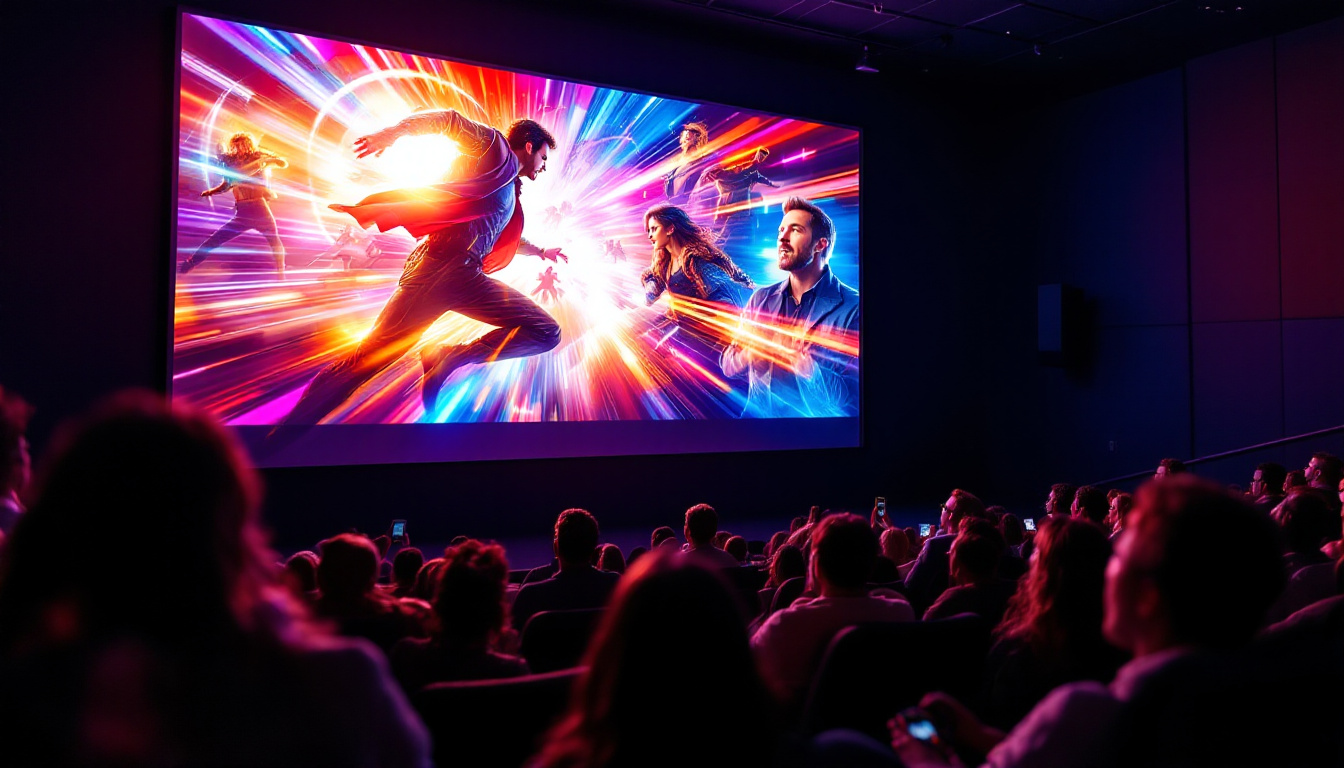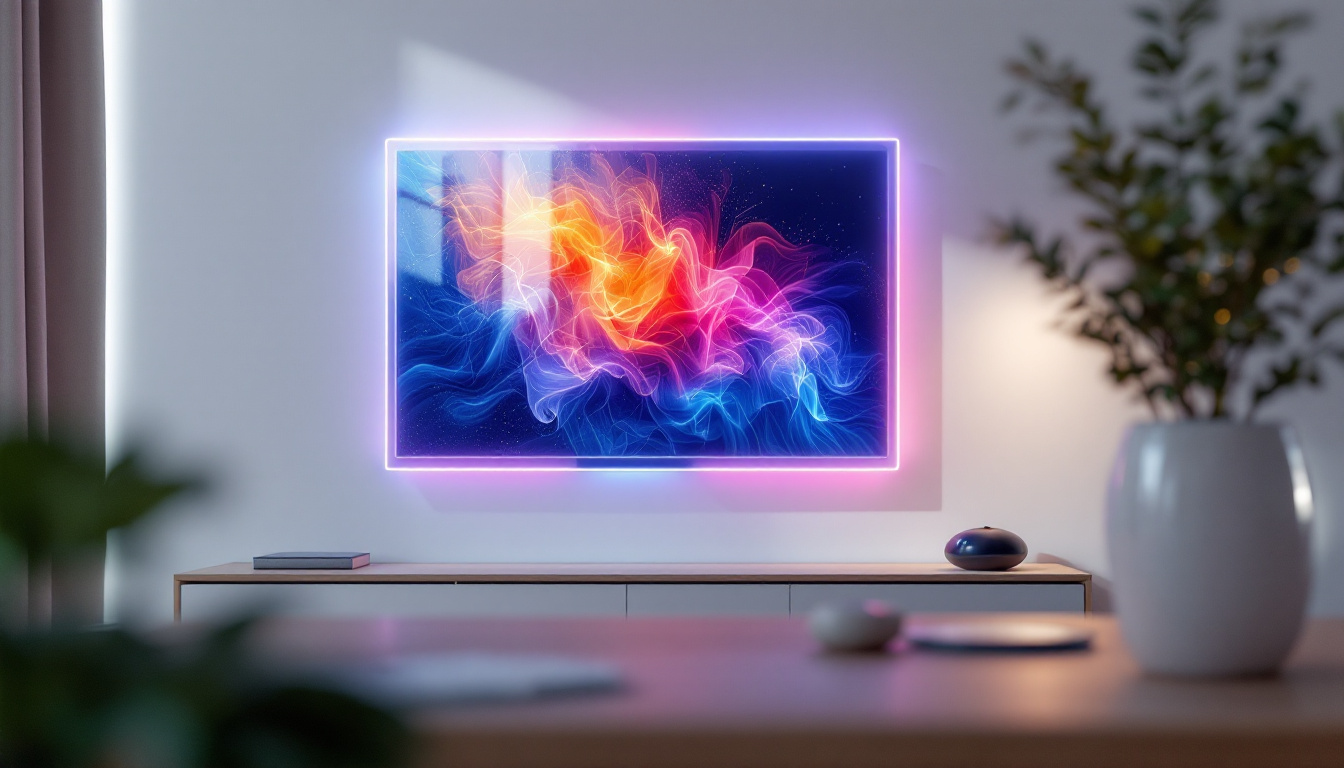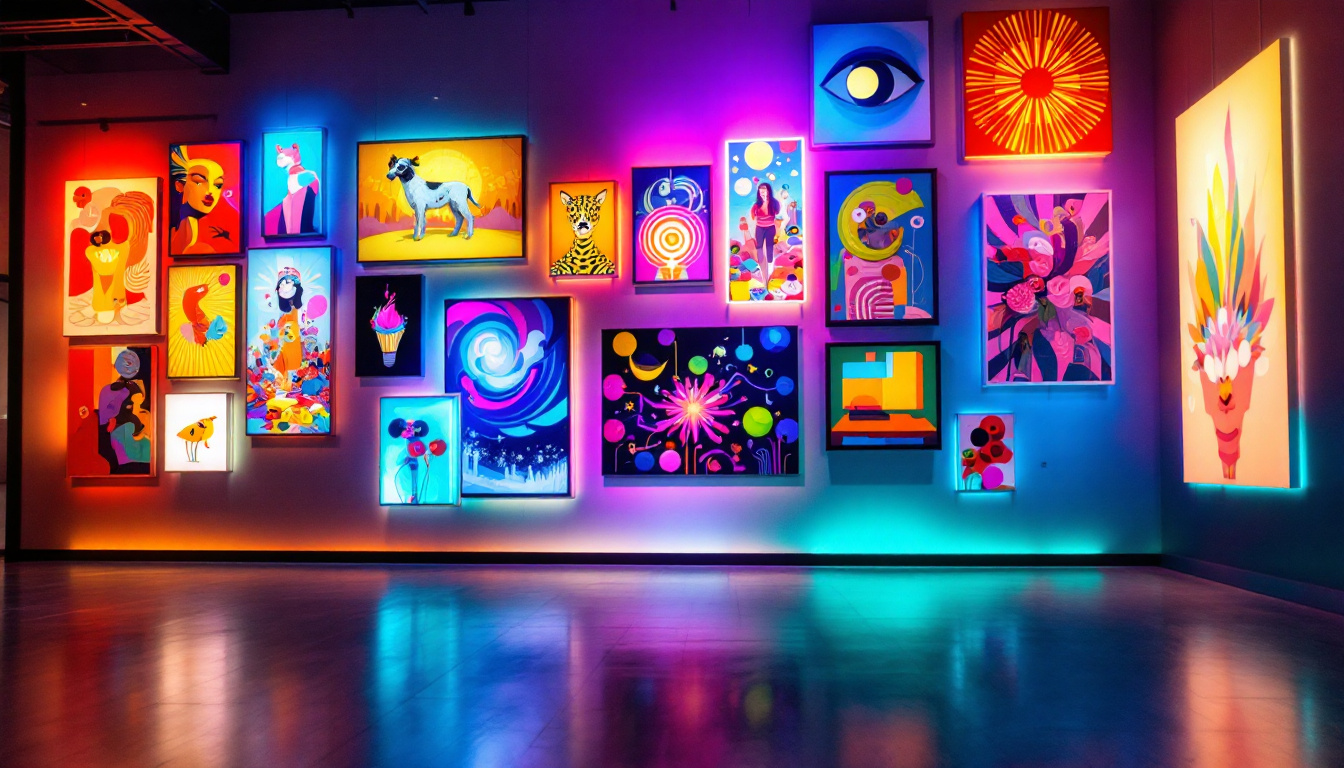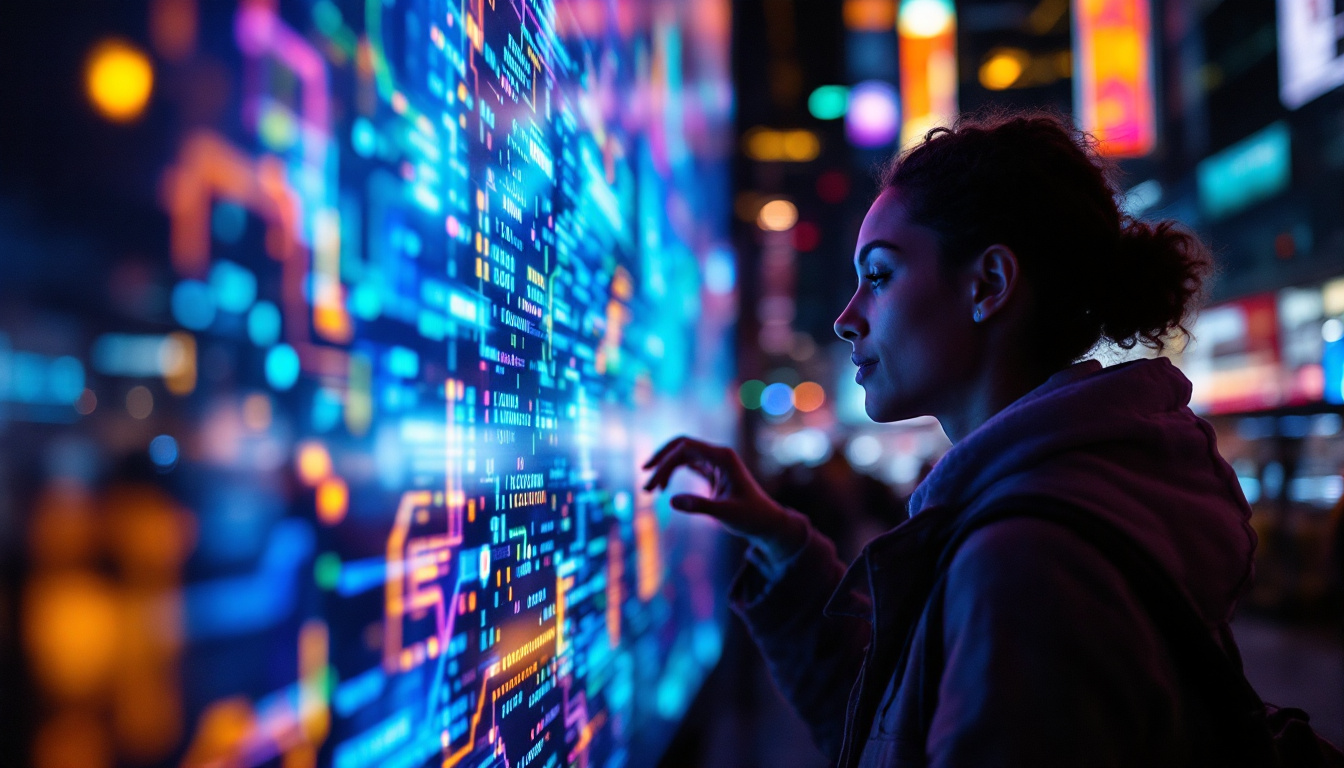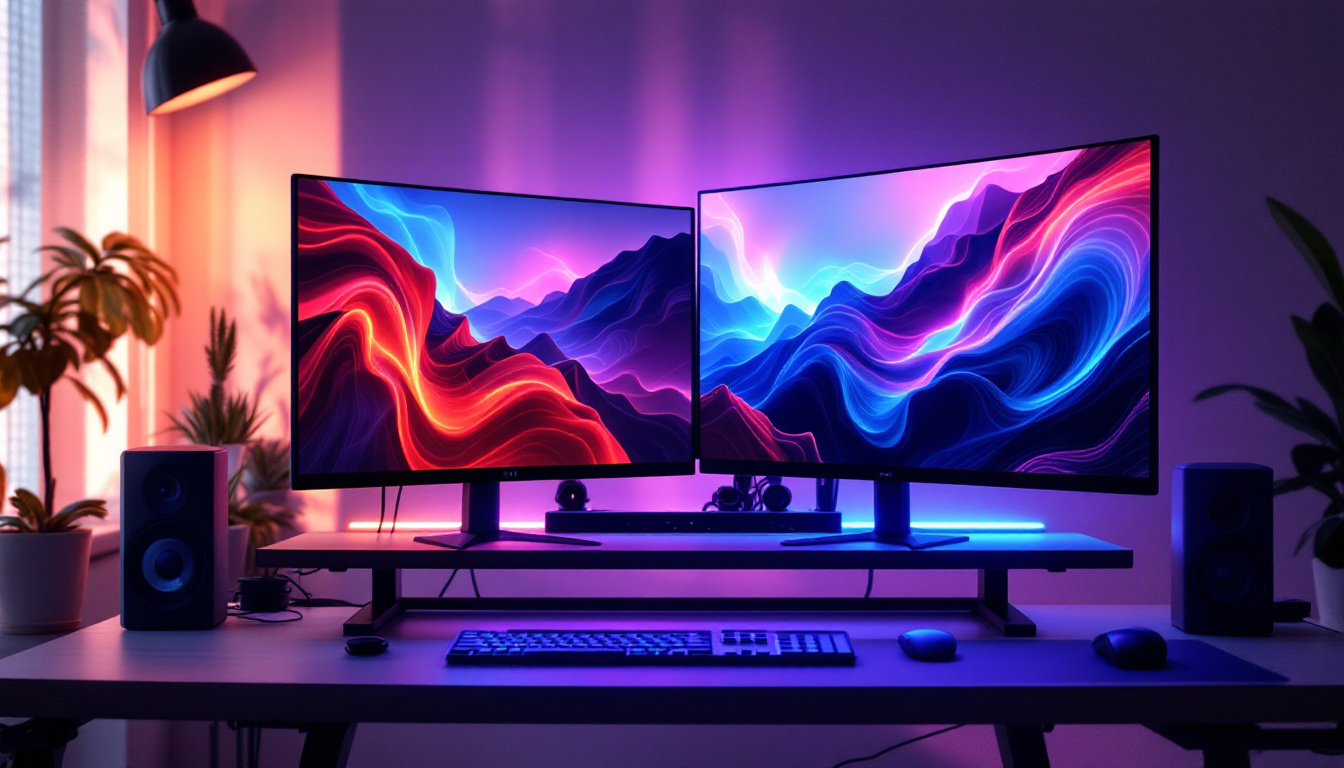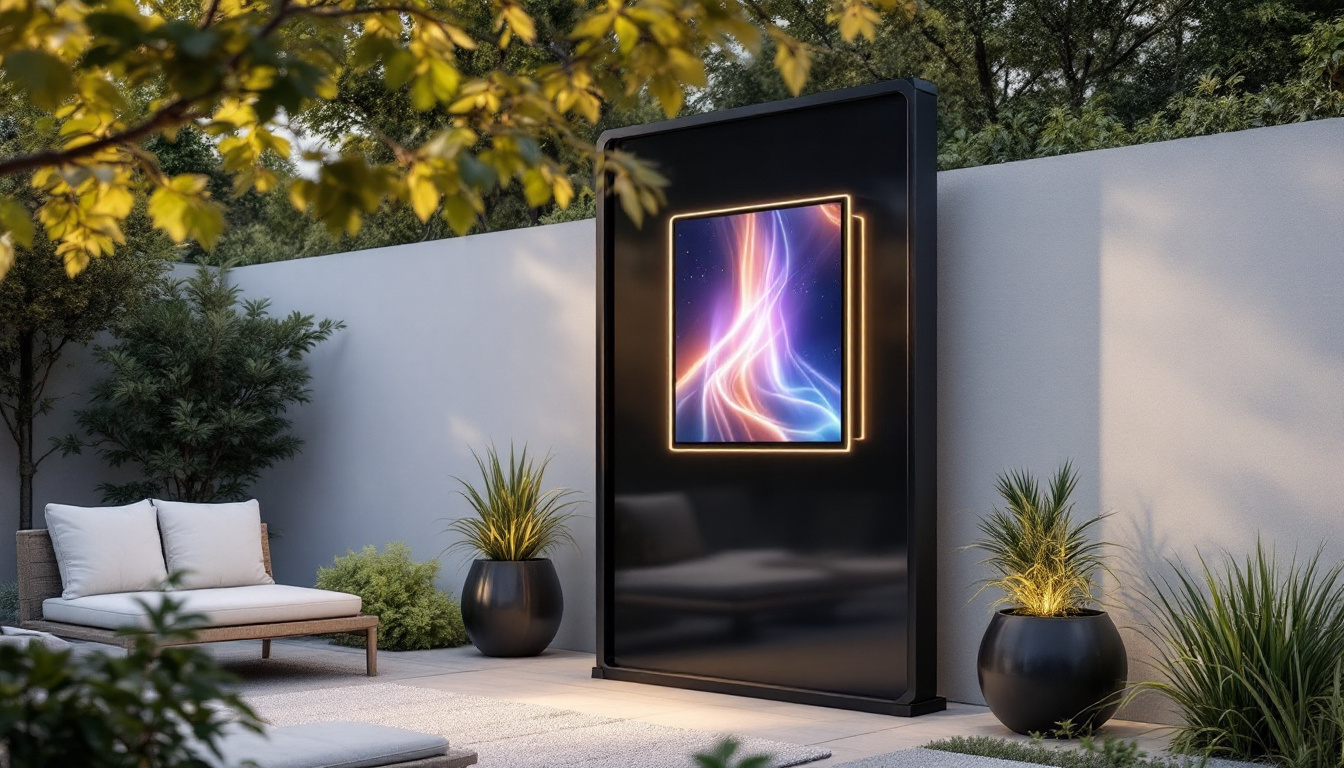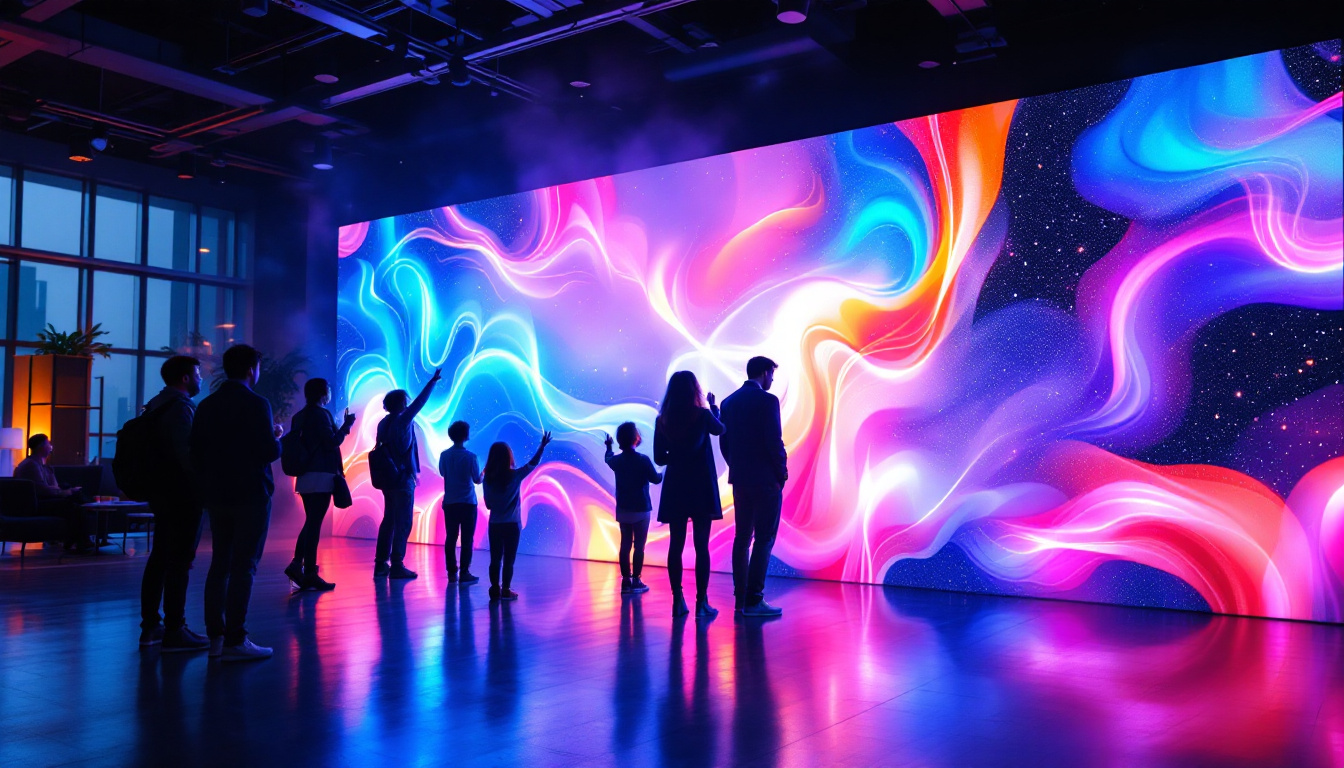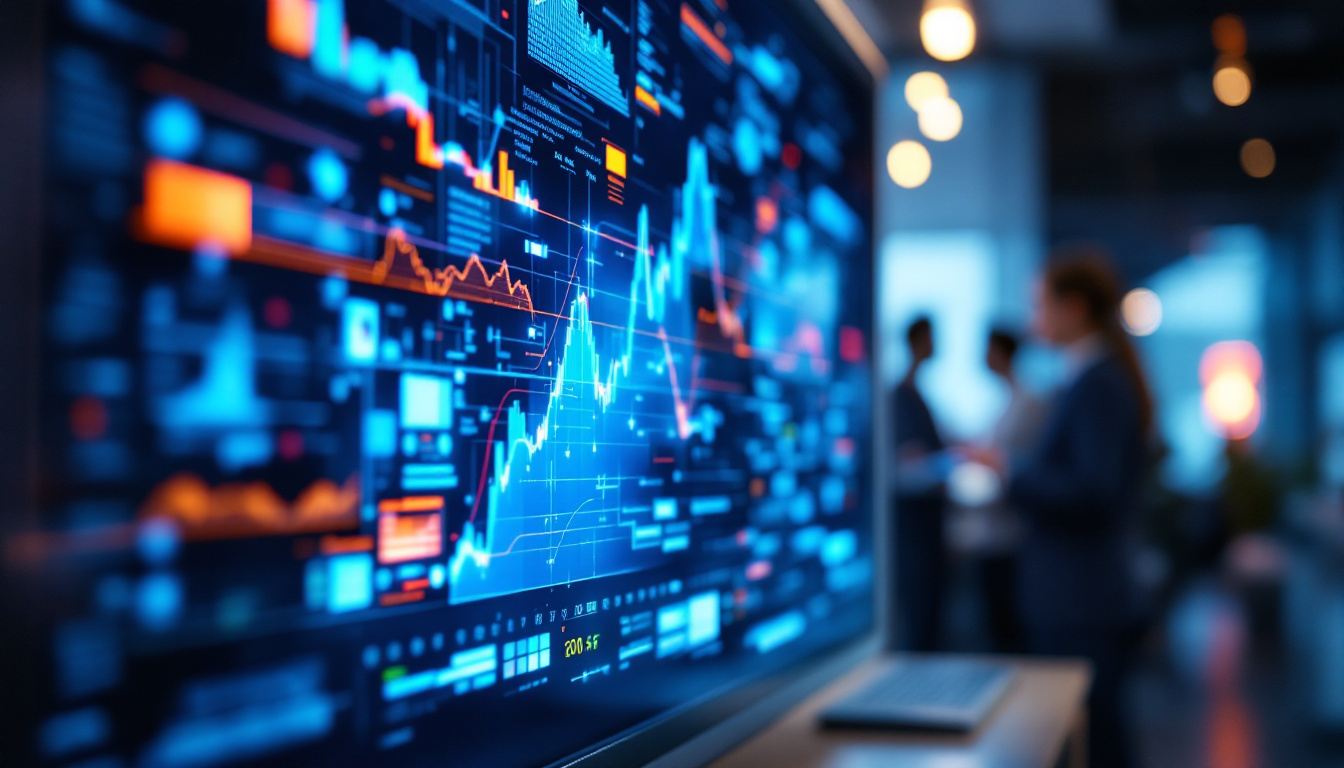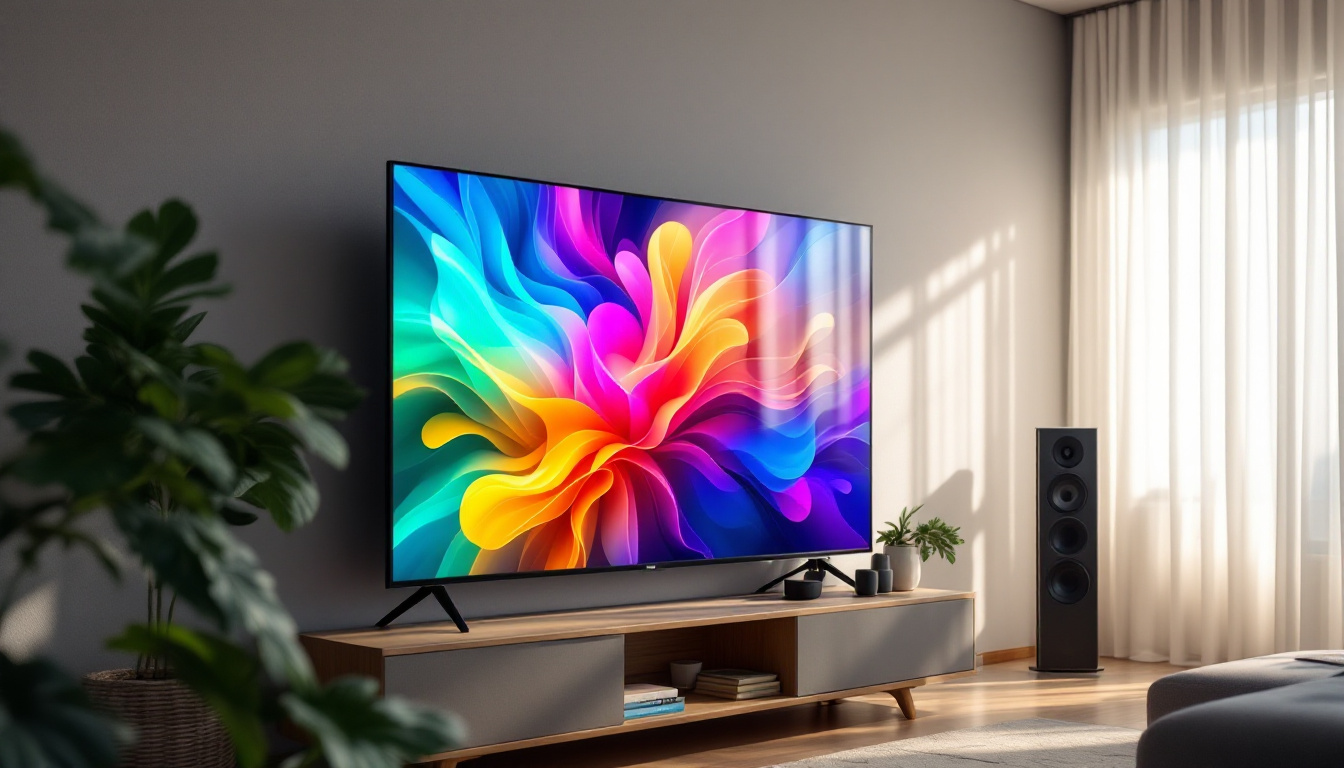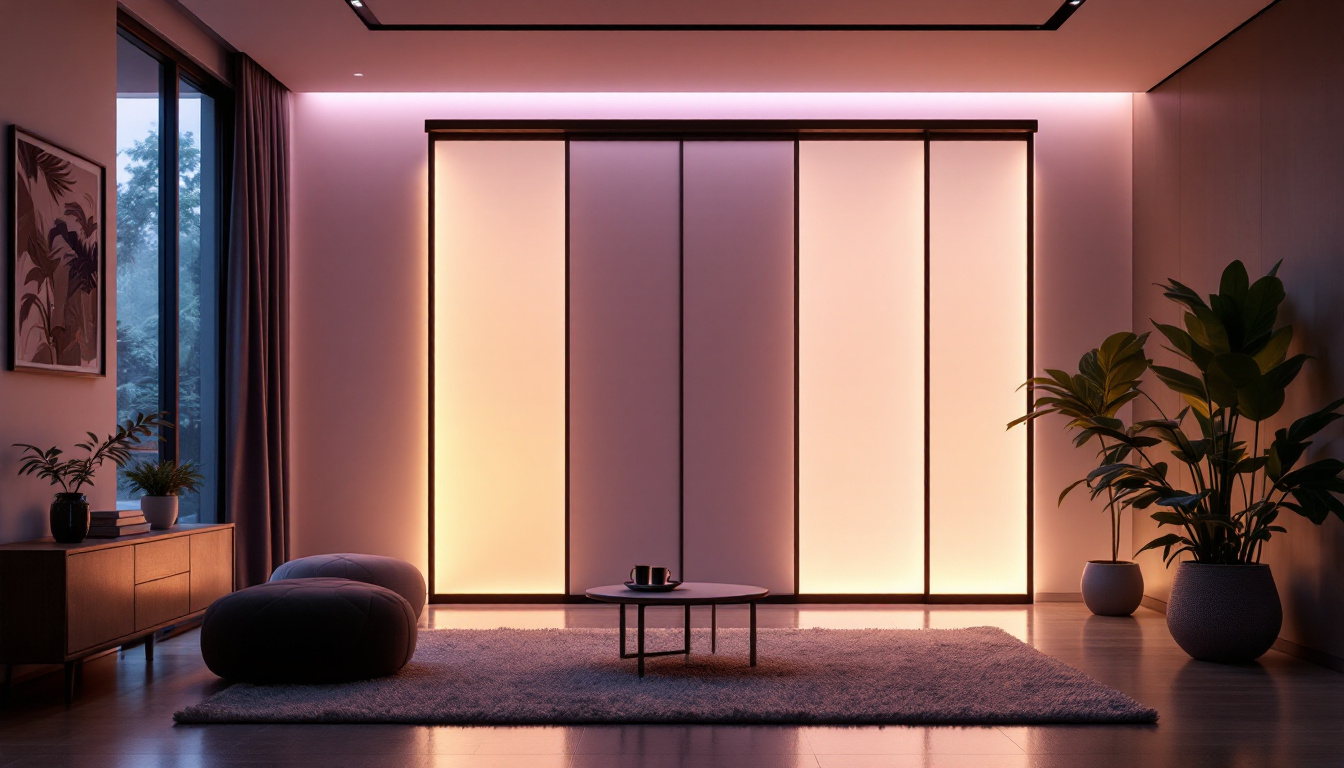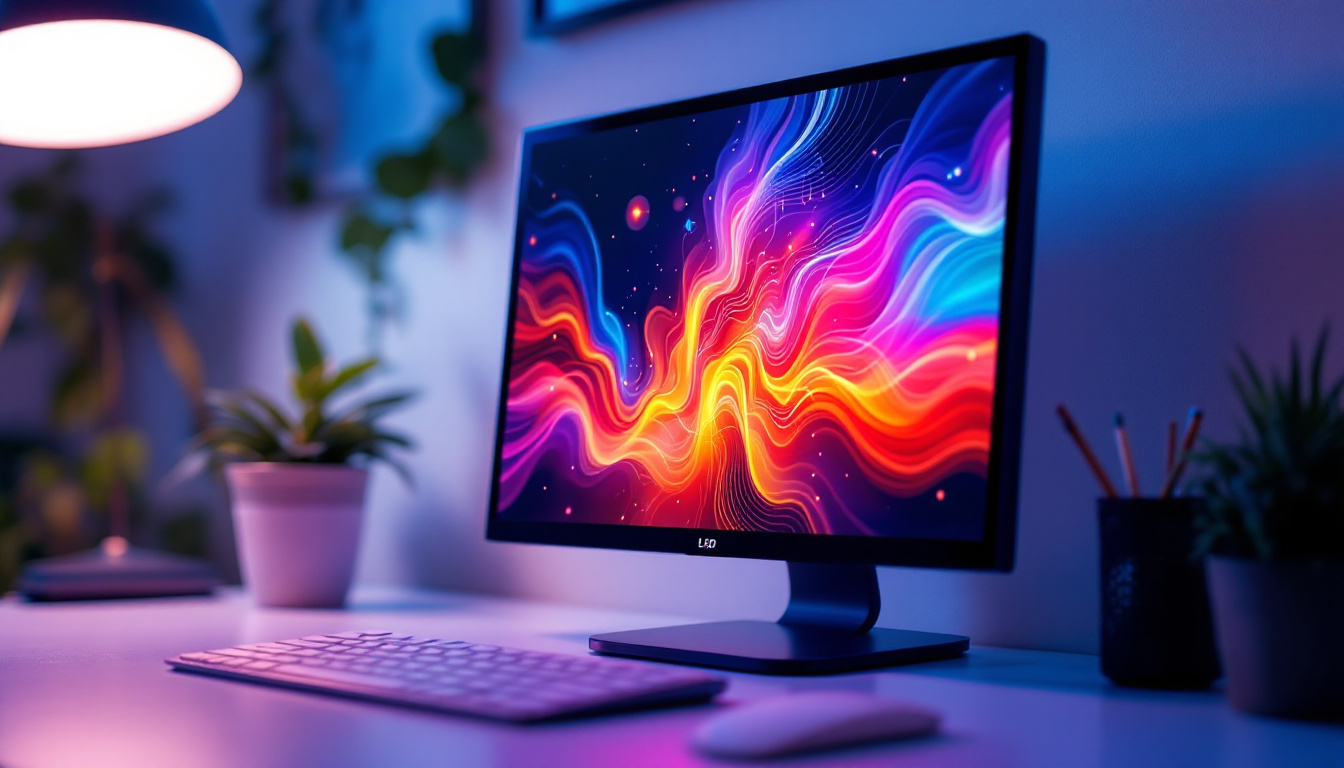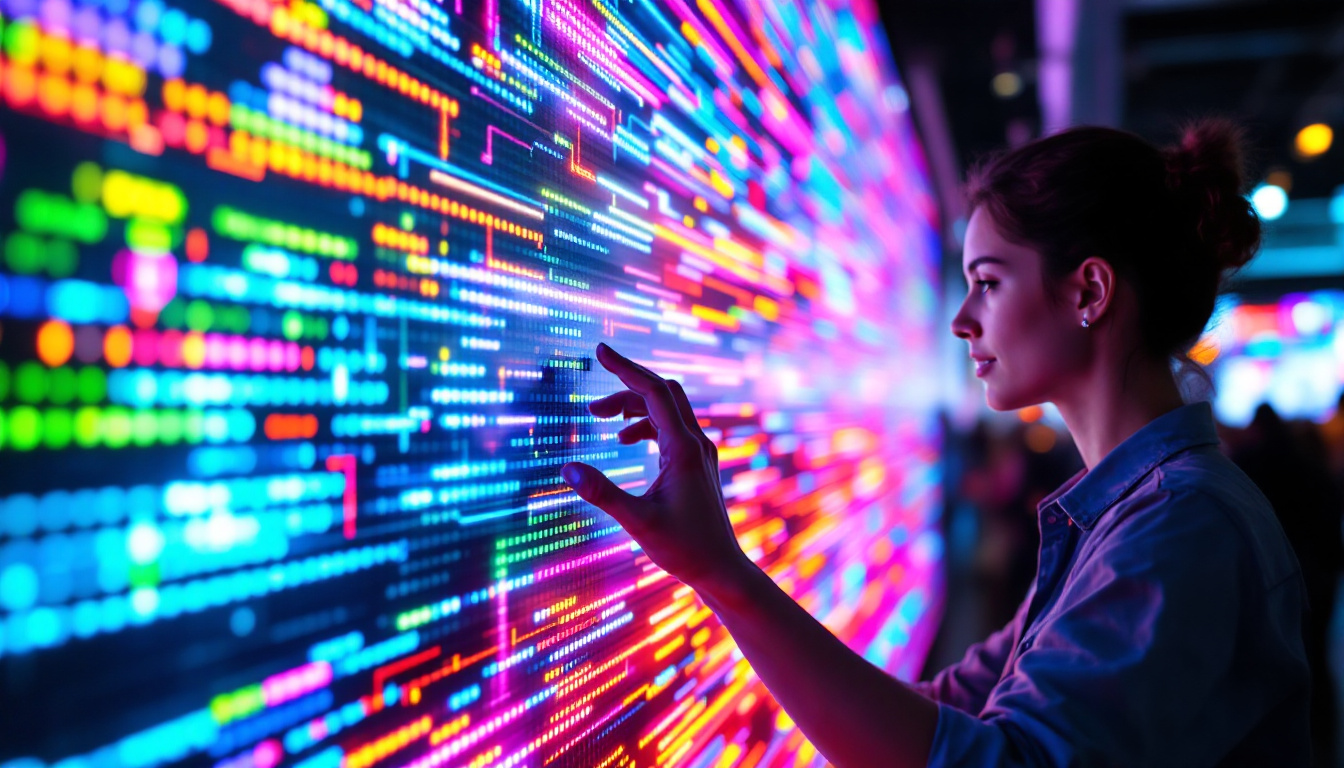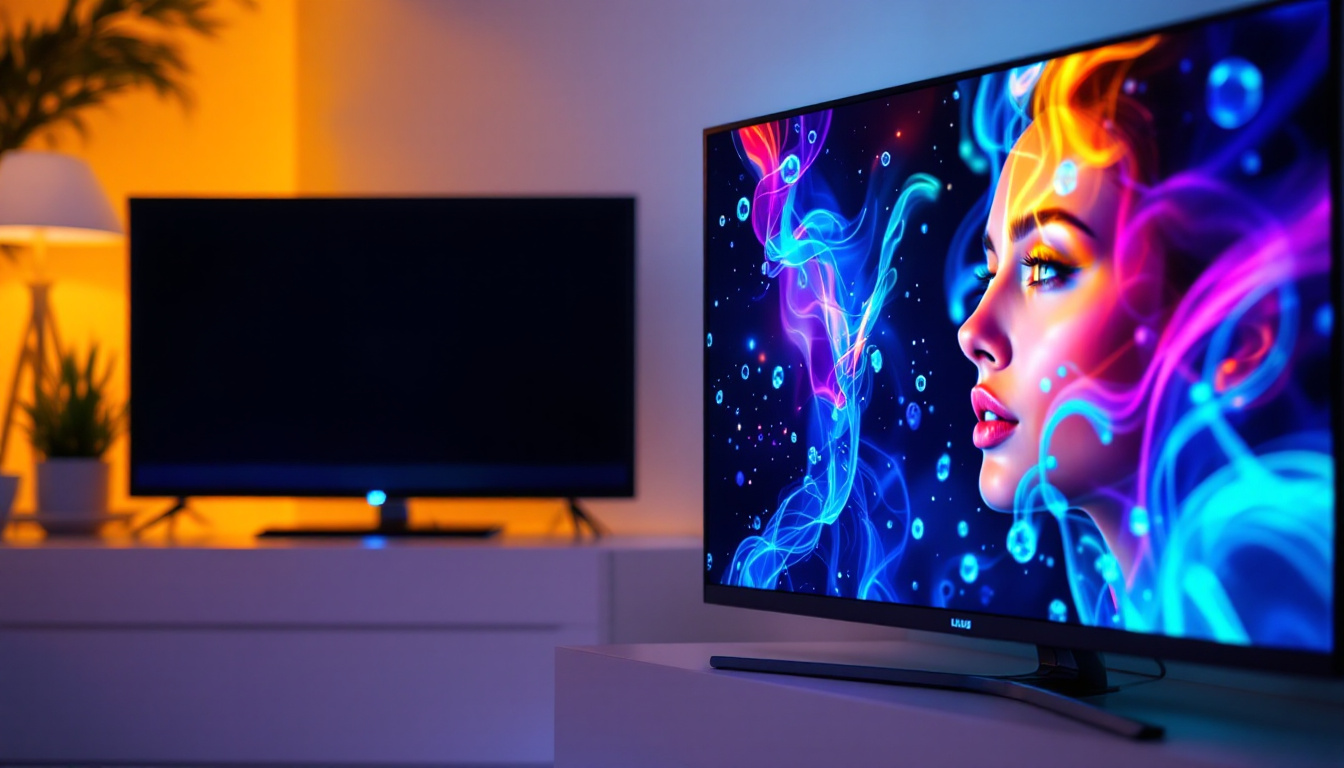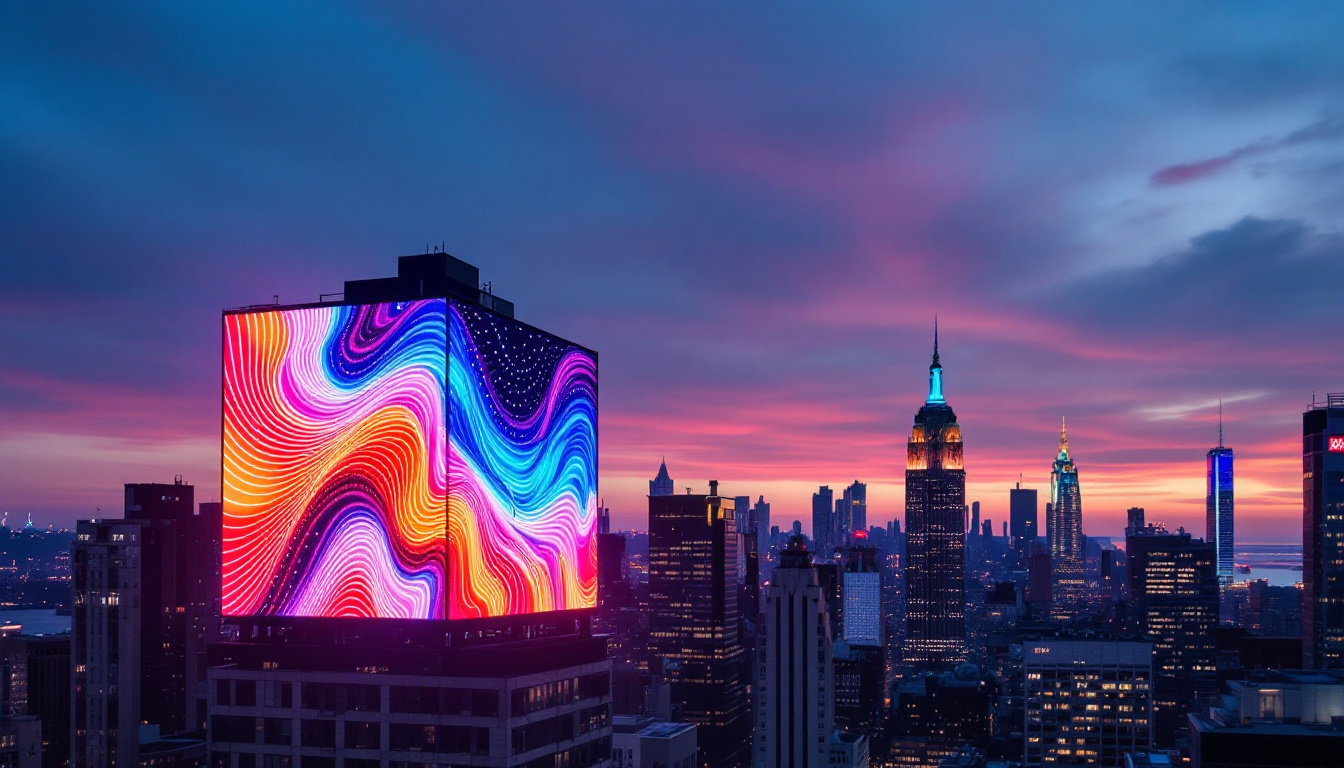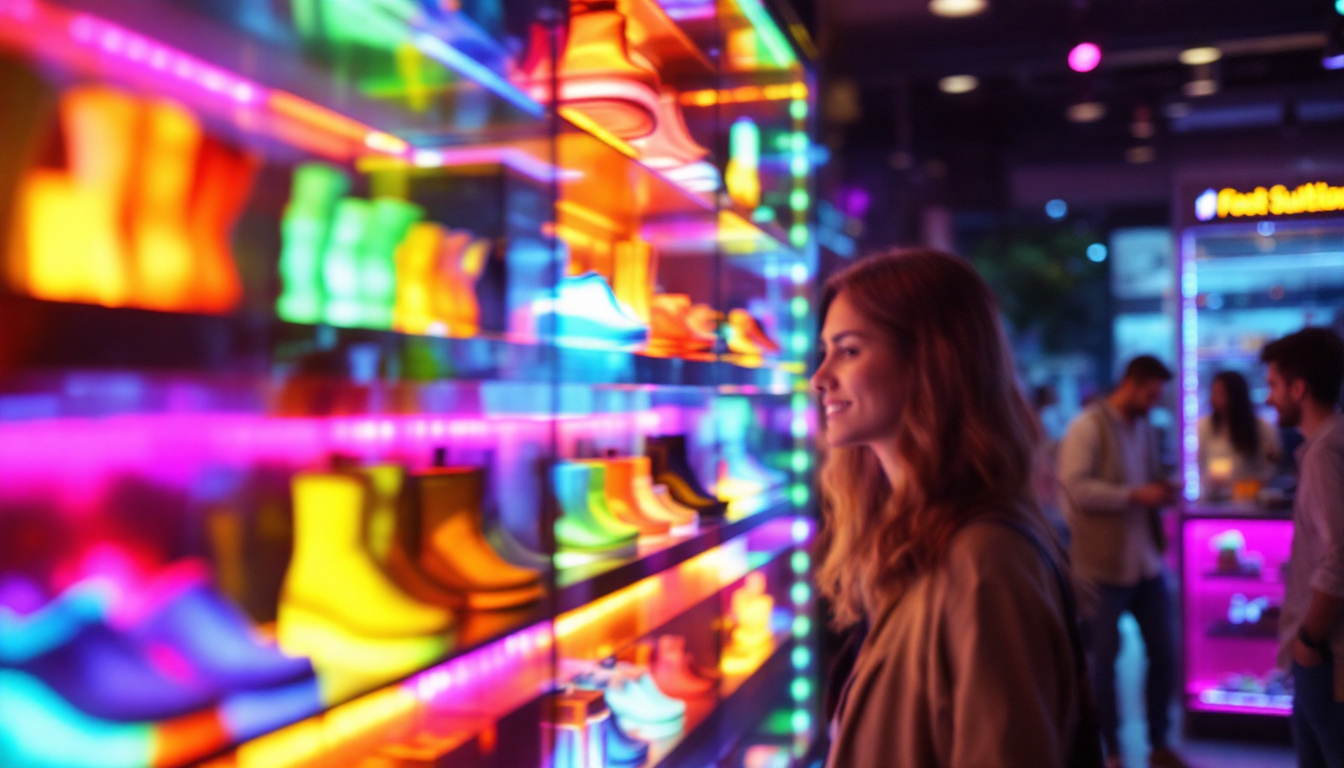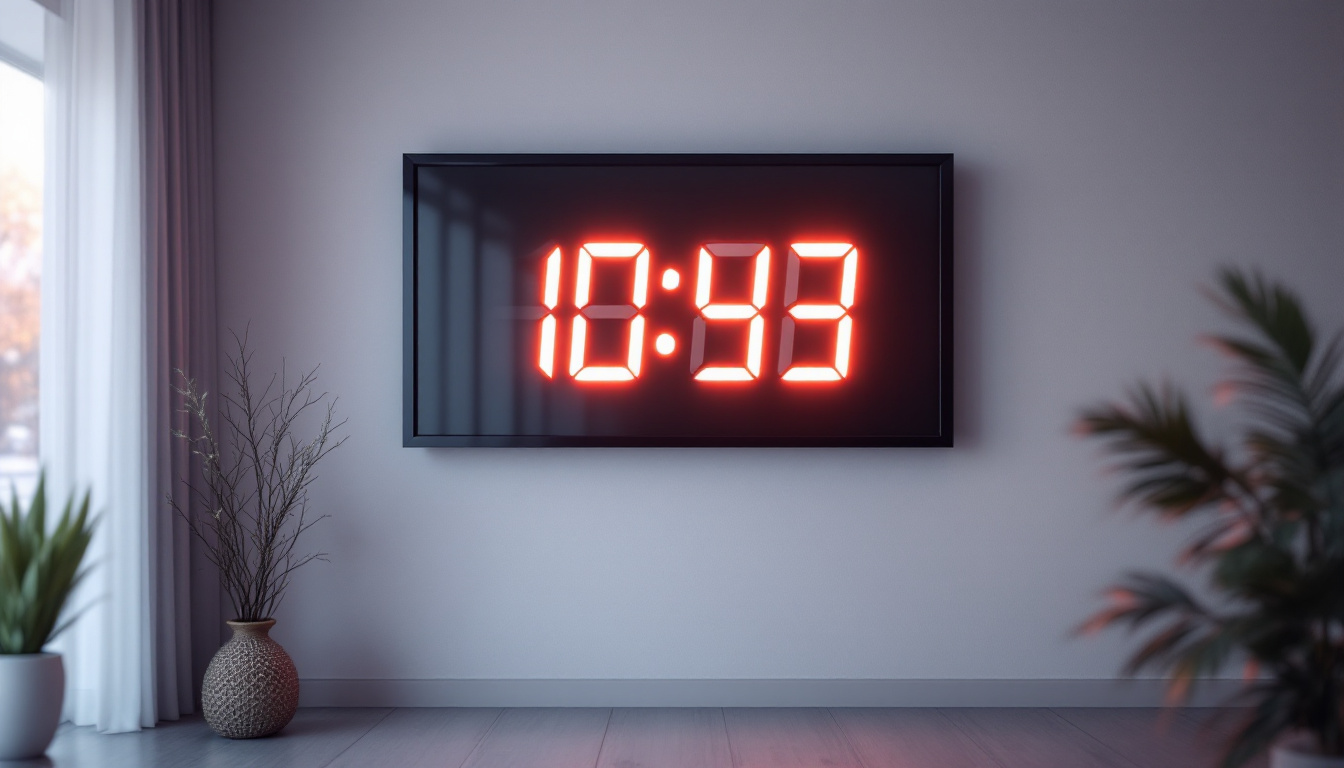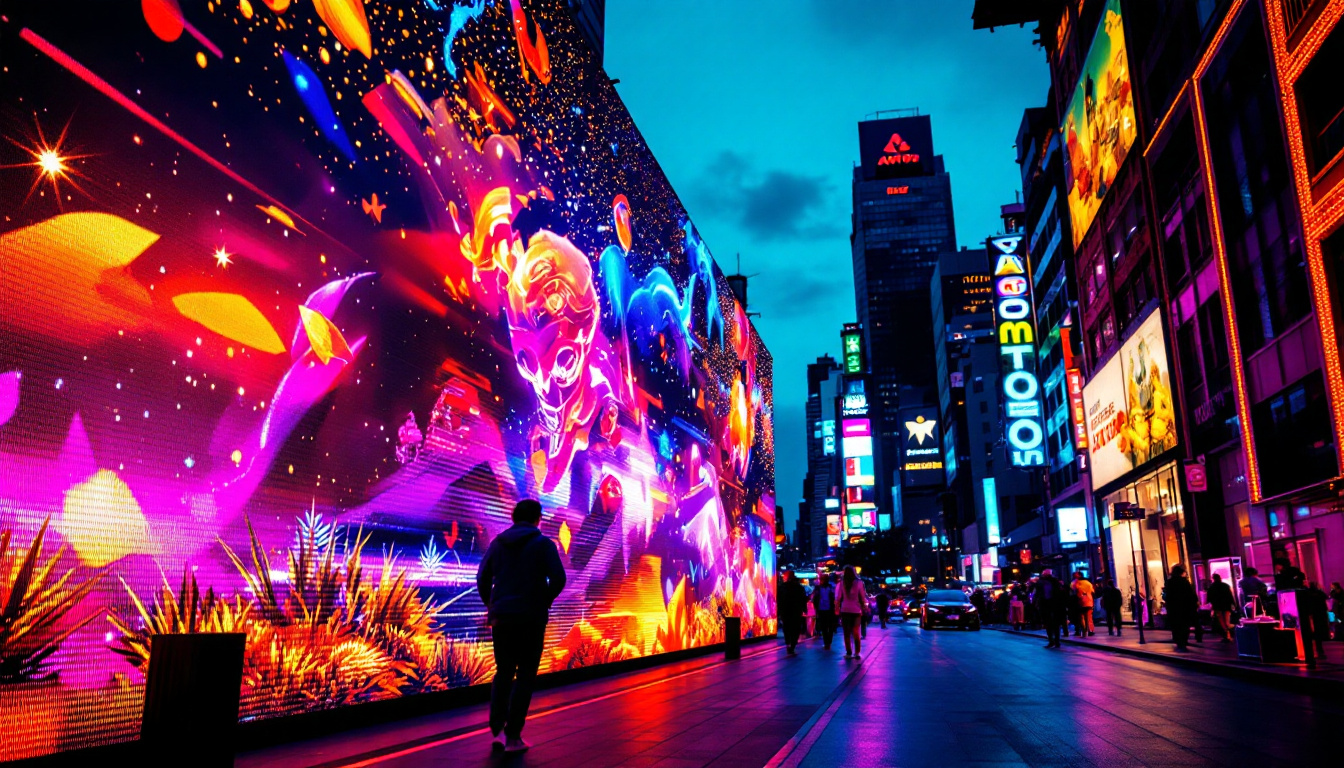In the modern world of advertising and communication, LED displays have emerged as a powerful tool for businesses and organizations. They offer vibrant colors, high visibility, and dynamic content capabilities that traditional displays simply cannot match. This article delves into the intricacies of LED displays, exploring their technology, applications, and benefits, particularly in the context of a showroom environment.
Understanding LED Technology
LED, or Light Emitting Diode, technology has revolutionized the way visual information is presented. Unlike traditional light sources, LEDs are semiconductor devices that emit light when an electric current passes through them. This fundamental difference contributes to their efficiency and versatility. The compact size of LEDs also allows for creative design possibilities, enabling manufacturers to create displays that can be curved, flexible, or even integrated into surfaces, further expanding the potential applications of this technology.
The Basics of LED Operation
At its core, an LED display consists of numerous tiny diodes grouped together to form pixels. Each pixel can emit different colors, allowing for the creation of full-color images and videos. The combination of red, green, and blue (RGB) LEDs in each pixel enables a wide spectrum of colors, making the display vibrant and engaging. This color mixing capability is not only crucial for aesthetic appeal but also for conveying information effectively, as it allows for the representation of various shades and tones that can enhance user experience.
When an electric current is applied, the semiconductor material in the LED emits photons, producing light. This process is not only energy-efficient but also allows for quick response times, making LED displays ideal for dynamic content such as advertisements and announcements. Furthermore, LEDs have a longer lifespan compared to traditional lighting solutions, often lasting tens of thousands of hours, which translates to lower maintenance costs and reduced environmental impact over time.
Types of LED Displays
LED displays come in various types, each designed for specific applications. The most common types include:
- Indoor LED Displays: These are typically used in venues such as shopping malls, conference rooms, and theaters. They offer high resolution and are designed for close viewing distances. Their ability to produce bright, clear images even in well-lit environments makes them a popular choice for presentations and entertainment.
- Outdoor LED Displays: Built to withstand the elements, outdoor displays are larger and have lower resolution than indoor displays. They are often used for billboards and large-scale advertising. These displays are engineered to be highly visible in direct sunlight and can often feature advanced technologies like automatic brightness adjustment to ensure optimal visibility at all times.
- Transparent LED Displays: These innovative displays allow for visibility through the screen, making them ideal for retail environments where maintaining a view of the products behind the display is essential. This unique feature not only enhances the shopping experience but also allows for creative advertising solutions that blend seamlessly with the store’s aesthetic.
In addition to these common types, there are also specialized LED displays such as flexible LED screens that can be shaped to fit unusual spaces, and interactive LED displays that respond to user input, creating engaging experiences for audiences. As technology continues to advance, the applications of LED displays are expanding, paving the way for new innovations in advertising, entertainment, and information dissemination.
Applications of LED Displays
The versatility of LED displays makes them suitable for a wide range of applications. From advertising to information dissemination, their impact is significant across various sectors.
Advertising and Marketing
One of the most prominent uses of LED displays is in advertising. Businesses leverage these displays to showcase their products and services in a visually striking manner. The ability to change content quickly allows for real-time promotions and updates, which can attract more customers.
In high-traffic areas, outdoor LED billboards can capture the attention of passersby, conveying messages that resonate with the target audience. The dynamic nature of LED displays means that advertisements can be tailored to different times of the day or special events, maximizing engagement.
Information Display
LED displays are also widely used for information dissemination. public transportation systems utilize LED screens to provide real-time updates on schedules and delays, enhancing the passenger experience. Similarly, educational institutions use LED displays to convey important announcements and event information to students and staff.
In corporate environments, these displays can serve as digital signage, showcasing company news, performance metrics, and other relevant information. This not only keeps employees informed but also fosters a sense of community within the workplace.
Benefits of Using LED Displays
The advantages of incorporating LED displays into a showroom or any other environment are numerous. Understanding these benefits can help businesses make informed decisions about their visual communication strategies.
Energy Efficiency
One of the standout features of LED technology is its energy efficiency. Compared to traditional lighting solutions, LEDs consume significantly less power, leading to reduced energy costs. This is particularly advantageous for businesses that operate large displays for extended periods.
Moreover, the longevity of LED displays means that they require less frequent replacement, further contributing to cost savings over time. This sustainability aspect aligns with the growing emphasis on environmentally friendly practices in business operations.
High Visibility and Brightness
LED displays are known for their exceptional brightness, making them highly visible even in direct sunlight. This characteristic is crucial for outdoor applications, where visibility can make or break an advertising campaign. The vivid colors and sharp contrast offered by LED technology ensure that messages are communicated effectively, regardless of lighting conditions.
Furthermore, the wide viewing angles of LED displays allow multiple viewers to see the content clearly from various positions, enhancing the overall impact of the display.
Choosing the Right LED Display for Your Showroom
Selecting the appropriate LED display for a showroom involves several considerations. Understanding the specific needs of the space and the intended audience is essential for making the right choice.
Determining the Size and Resolution
The size of the LED display should be proportional to the showroom’s dimensions and the viewing distance. Larger displays are ideal for open spaces where viewers will be further away, while smaller displays can be effective in more intimate settings.
Resolution is another critical factor. Higher resolution displays provide clearer images and text, which is particularly important for detailed product presentations. For indoor showrooms, a resolution of 2mm to 4mm is often recommended, while outdoor displays may range from 8mm to 16mm, depending on the viewing distance.
Content Management Systems
To maximize the effectiveness of an LED display, a robust content management system (CMS) is essential. A CMS allows users to create, schedule, and manage content easily. This flexibility enables businesses to keep their messaging fresh and relevant, adapting to changing promotions or events.
When selecting a CMS, consider features such as user-friendliness, compatibility with various media formats, and the ability to integrate with other systems. A well-chosen CMS can significantly enhance the overall impact of the LED display.
Installation and Maintenance Considerations
Proper installation and maintenance are crucial for ensuring the longevity and performance of LED displays. Businesses must be aware of the best practices to keep their displays in optimal condition.
Professional Installation
While it may be tempting to attempt a DIY installation, enlisting the help of professionals is highly recommended. Expert installers understand the technical requirements and can ensure that the display is mounted securely and correctly. This not only enhances safety but also optimizes the display’s performance.
Additionally, professional installation can help in configuring the display settings for the best visual output, ensuring that colors and brightness are calibrated correctly.
Regular Maintenance
To maintain the quality of an LED display, regular maintenance is essential. This includes cleaning the screen to remove dust and debris that can affect visibility. It is also important to monitor the display for any signs of malfunction, such as dead pixels or color inconsistencies.
Establishing a maintenance schedule can help in identifying potential issues early, preventing costly repairs or replacements down the line. Many manufacturers offer maintenance packages that include routine checks and servicing, providing peace of mind for businesses.
The Future of LED Displays
The future of LED displays is bright, with ongoing advancements in technology promising even more innovative applications. As businesses continue to seek engaging ways to communicate with their audiences, LED displays will play a pivotal role in shaping visual communication strategies.
Emerging Technologies
New technologies are continually being integrated into LED displays, enhancing their capabilities. For instance, the development of flexible LED screens allows for creative installations that can adapt to various shapes and surfaces. This opens up new possibilities for branding and advertising.
Additionally, advancements in artificial intelligence (AI) are enabling more personalized content delivery. AI-powered systems can analyze viewer behavior and preferences, allowing businesses to tailor their messaging in real time, further increasing engagement.
Sustainability Initiatives
As sustainability becomes a priority for many organizations, the LED industry is also evolving. Manufacturers are increasingly focusing on eco-friendly materials and processes, ensuring that LED displays are not only efficient but also environmentally responsible.
By investing in sustainable technologies, businesses can enhance their brand image while contributing to a greener future. This alignment with consumer values can lead to increased customer loyalty and trust.
Conclusion
LED displays have transformed the landscape of visual communication, offering unparalleled advantages in terms of visibility, energy efficiency, and versatility. As businesses continue to explore innovative ways to engage their audiences, understanding the intricacies of LED technology becomes essential.
From advertising to information dissemination, the applications of LED displays are vast and varied. By carefully considering factors such as size, resolution, and content management, businesses can select the right displays for their needs. Furthermore, proper installation and maintenance will ensure that these displays remain effective tools for communication.
As technology continues to advance, the future of LED displays promises exciting developments that will further enhance their capabilities. By staying informed and adapting to these changes, businesses can leverage LED displays to create impactful visual experiences that resonate with their audiences.
Explore Cutting-Edge LED Displays with LumenMatrix
Ready to elevate your showroom and captivate your audience with the latest in LED display technology? Discover LumenMatrix’s innovative solutions, from Indoor and Outdoor LED Wall Displays to specialized options like Vehicle, Sports, and Floor LED Displays. Our mission is to revolutionize your visual communication, ensuring your message is delivered with maximum impact. Don’t miss out on the opportunity to transform your space. Check out LumenMatrix LED Display Solutions today and see the difference for yourself.

